It was going to be somewhat of a race to get through the Philippines, and then journey on to Japan in time make the 11th May start of the Setouchi Rally. At one point, Paul was considering cancelling our places on it and cutting our losses. I did feel for him because along with route planning, he had to take typhoons, wind direction and sea states into consideration as he mulled over the options, as well as to decide on back up plans. His illness in KK had seriously disrupted the schedule. Pushing those thoughts to one side for the time being however, we weighed anchor just after 9am on March 26th and left Ulugan Bay for El Nido, a journey which included an overnight stop at the delightfully named Jib Boom Bay on the way. We arrived there at lunchtime, having made better speed than we had anticipated and anchored in 9 metres of water. The pictures show what a peaceful spot it is.


I was so taken by its beauty in fact that later, when we took the dinghy ashore, I was too busy gazing at the beach, trying to determine whether I was looking at a house or a shed, I didn’t pay attention to watching the depth and checking for coral on the sea bed. An awful grinding noise as we drew close to the beach soon reminded me. The propeller had hit a rock causing its pin to split. I wasn’t sure how serious that was but felt terribly guilty, and relieved when Paul managed to fix it. This lovely, remote picture postcard location, we soon discovered, was home to a family who had set up home on the beach. Three people had watched us arrive and they looked with interest as we dragged the dinghy up the sand to secure it. A young couple were sitting outside a small dwelling made of bamboo. The woman was cradling a tiny baby, and an older woman, presumably a grandmother of the baby, stood just behind her – all of them smiled as we walked nearer to them. Three barking dogs, who looked a bit too keen to investigate us, backed off at a command from the man. Thinking of the many ‘No Trespassing’ signs we’d seen, Paul asked them if it was ok to walk along the beach. The man nodded and despite the language barrier, a conversation of sorts took place about where we were from and where we were going. We learned that they did indeed live on the island. The man was a fisherman and looked pleased when we indicated how beautiful their home was. He was amused when Paul told of his own efforts to catch fish. I couldn’t help wondering how they all fitted in such a tiny house which afforded little protection from the elements – or privacy for that matter. On the way back as we passed the bamboo house, I spotted a much bigger, sturdier structure set behind some trees, complete with a satellite dish! Not so primitive after all then. I didn’t take my phone with me unfortunately so the only picture I have of the beach is the one below, taken from the anchorage.

We would probably have stayed another night if we hadn’t been in such a hurry to get further north. An early start was necessary for the long leg to El Nido so at 6am on a stunningly gorgeous morning with the sun glowing behind a mountain before it revealed itself in all its glory, we motored off on a flat calm sea.

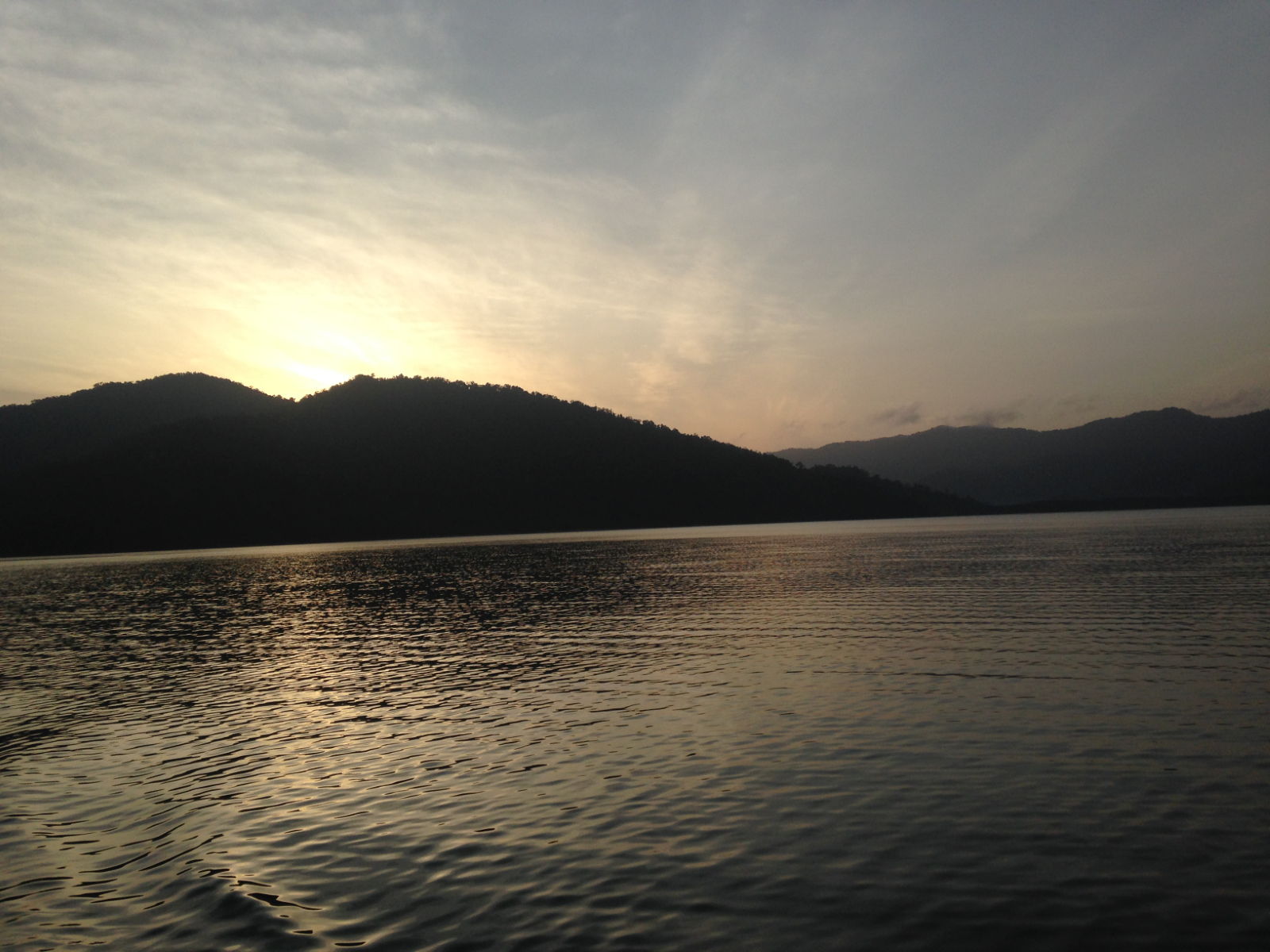
Paul was busy working below on the water maker later that morning while I kept watch in the cockpit. A fishing boat I’d been keeping an eye on suddenly drew alarmingly close and I could see the three men on board gesticulating wildly and – to my mind – angrily. Their fishing net marker buoy ahead was clearly visible but it was still some distance off. Paul came up and said they were warning us to keep our distance. Their gestures (one of which looked decidedly rude to me) seemed to be directing us where to go so we duly followed. One of them held up a fishing net and shook it in our direction in case we hadn’t got the message. I was feeling a bit indignant at their presumption that we wouldn’t have been cautious around the net without their intervention and had to resist the temptation to ‘gesticulate’ in return, especially when Paul said we were never any threat to their net anyway. The detour took about thirty minutes but they seemed satisfied once we had passed their final buoy. We parted with waves and smiles (at least I think they were waving ;)).


We arrived at Corong Corong around 5 30 and instead of being the only boat in the bay we joined several others. Paul was pleased to spot a boat he knew, belonging to Phil and Eva, a couple he had befriended in Malaysia while I was away in February. We motored around a bit before choosing a spot. Corong Corong is a noisy, busy resort with lots of activity taking place. There were scuba diving boats, fishing boats and jet skis among the yachts and catamarans at anchor as well as kayaks and snorkellers all around us. On the beach, a quiz got underway early in the evening. We joined in for a while as we could hear the questions clearly. The enthusiastic DJ and booming music that followed almost tempted us to go over and join in the dancing, too but we fell asleep instead unfortunately 😉
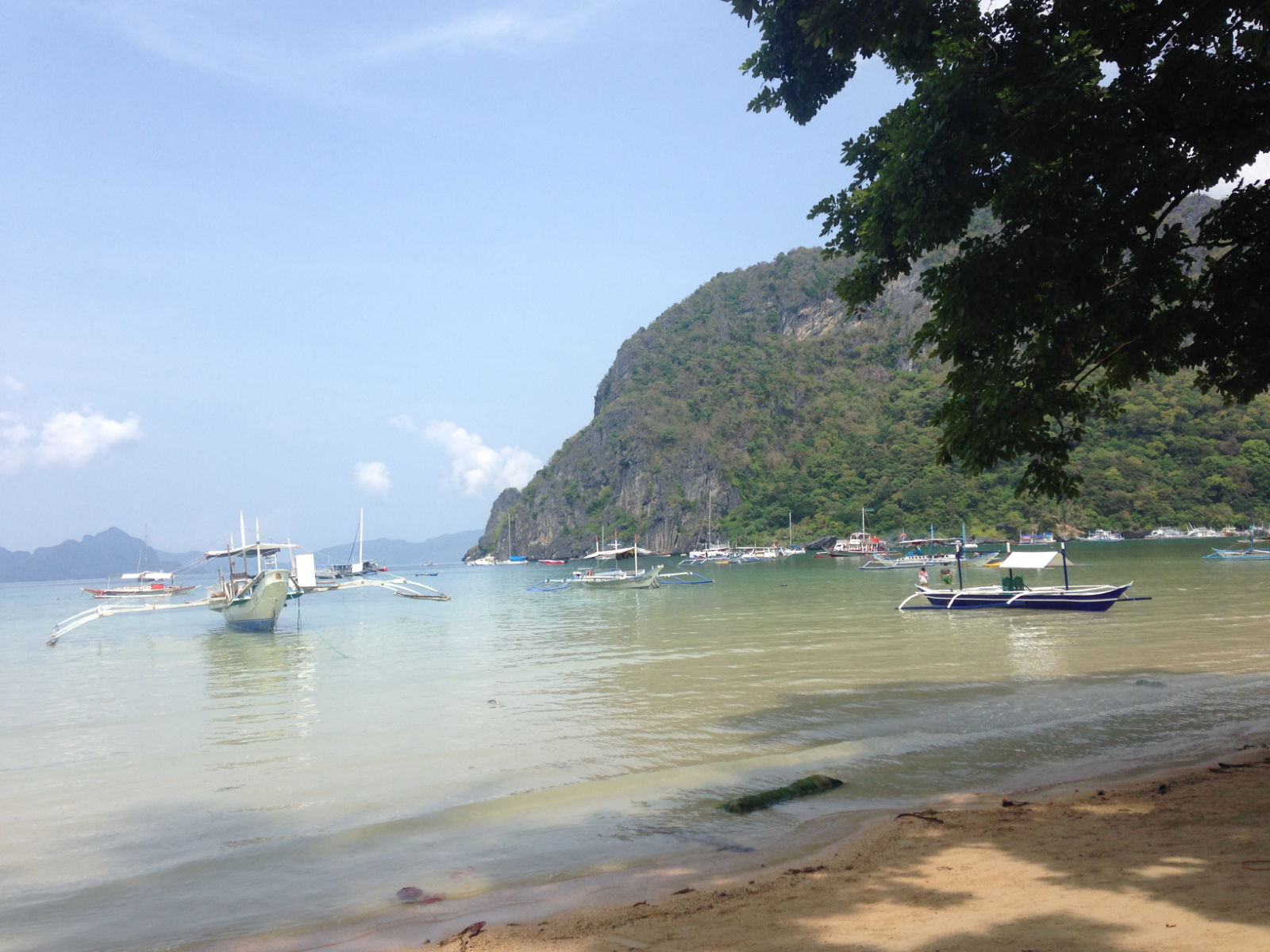
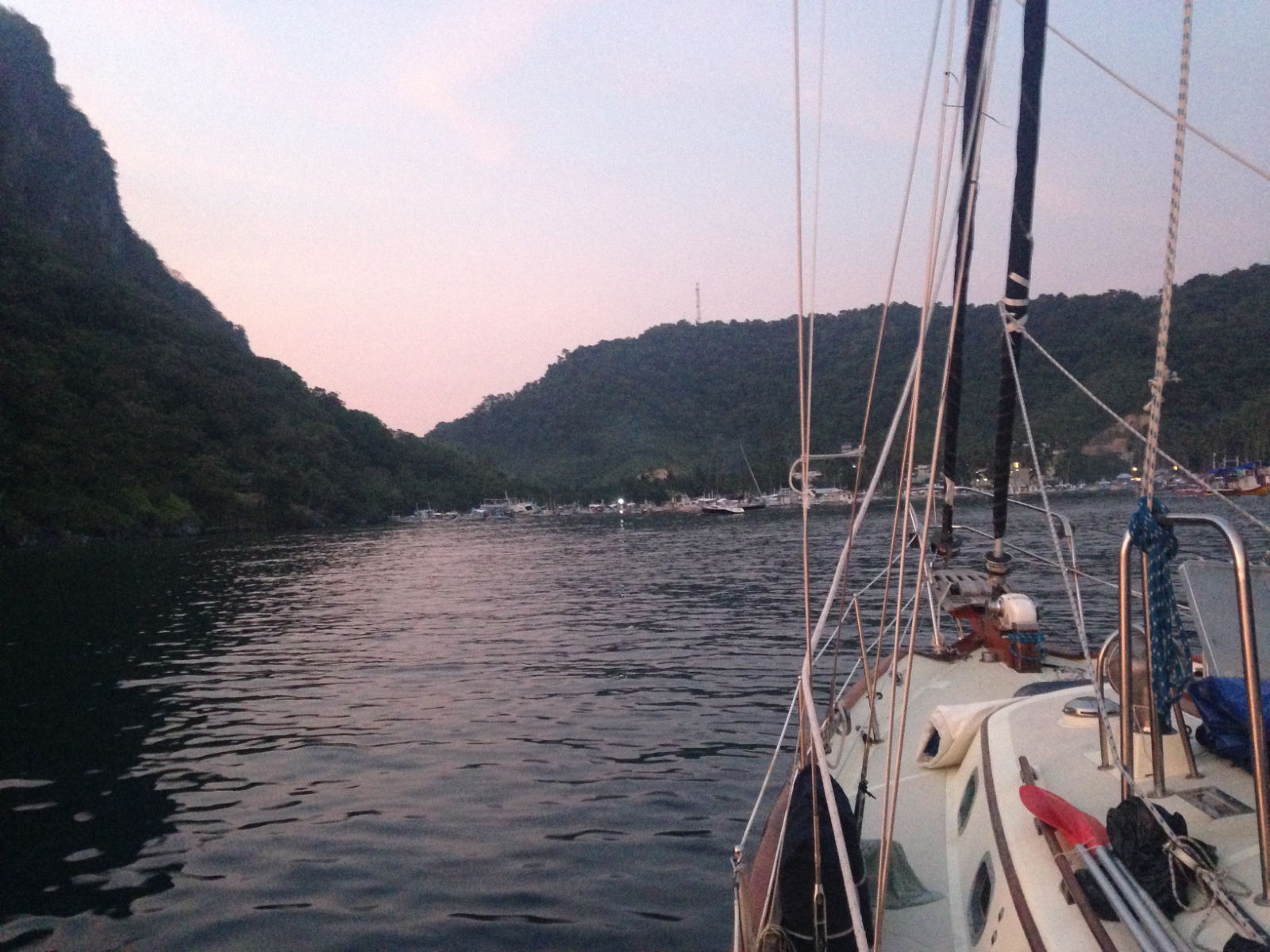
On the way to check out the town late the next morning, we stopped at Phil and Eva’s boat to see if they knew where we could buy fuel and to get any handy info on the place. They told us the best place to park the dinghy, the short cut from the beach to the town, and recommended places to eat. There didn’t seem to be any shortage of bars and cafes on the beach itself, and there’s no shortage of alcohol here. The heat from the sun in a cloudless sky beat down relentlessly as we made our way along the narrow lane leading upwards from the beach. It took us straight onto a noisy, dusty and chaotic town road.

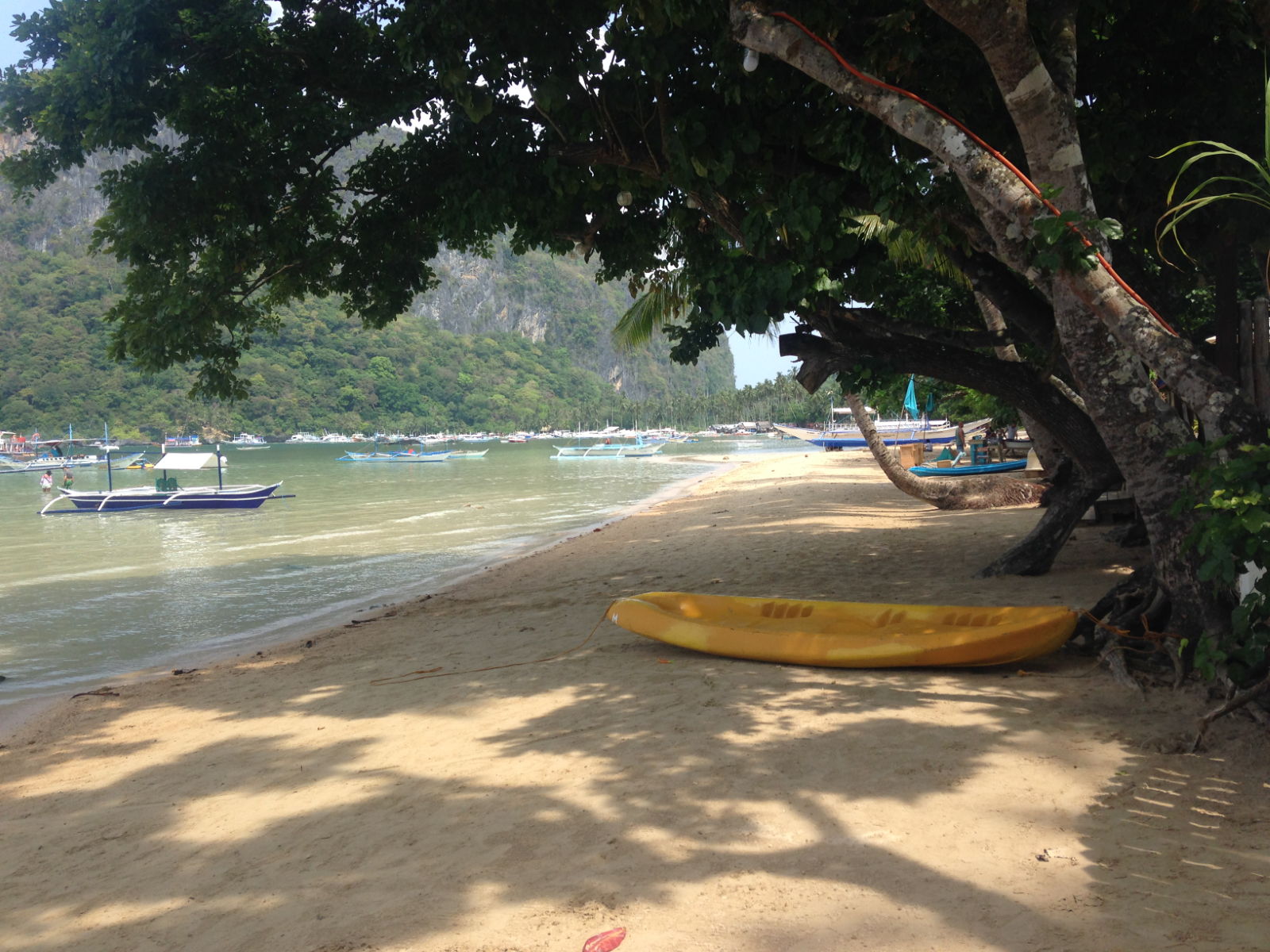

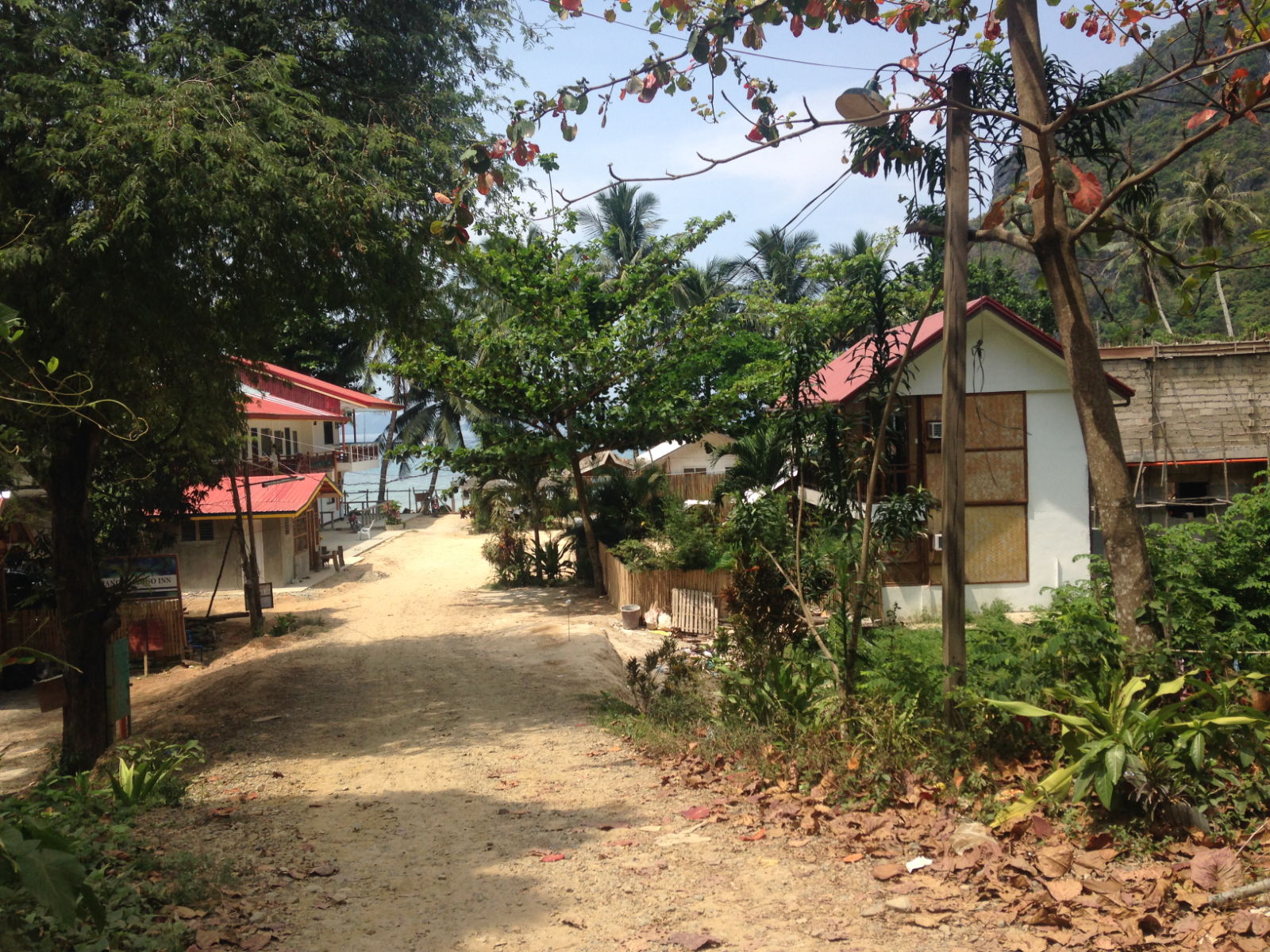
There were no pavements, and the dust was increased by the amount of building taking place along the roadsides. From what I could tell, more cafes, hostels and two-storey hotels were being constructed. Without the breeze from the sea it felt hotter than ever and we had opted to go on foot to El Nido, only a 20 minute walk but felt much longer in temperatures of over 30 degrees. The traffic consisted mainly of trikes but a fair few lorries and cars contributed to the noise and the stifling atmosphere. Despite all this, the environs were a feast for the eyes. An assortment of quaint houses and shops lined the road, along with souvenir shacks, food stalls and outdoor markets. Life is lived largely outside in this climate so a gathering of children, dogs and chickens among lines of colourful clothes hanging from string attached to porches indicated living quarters.
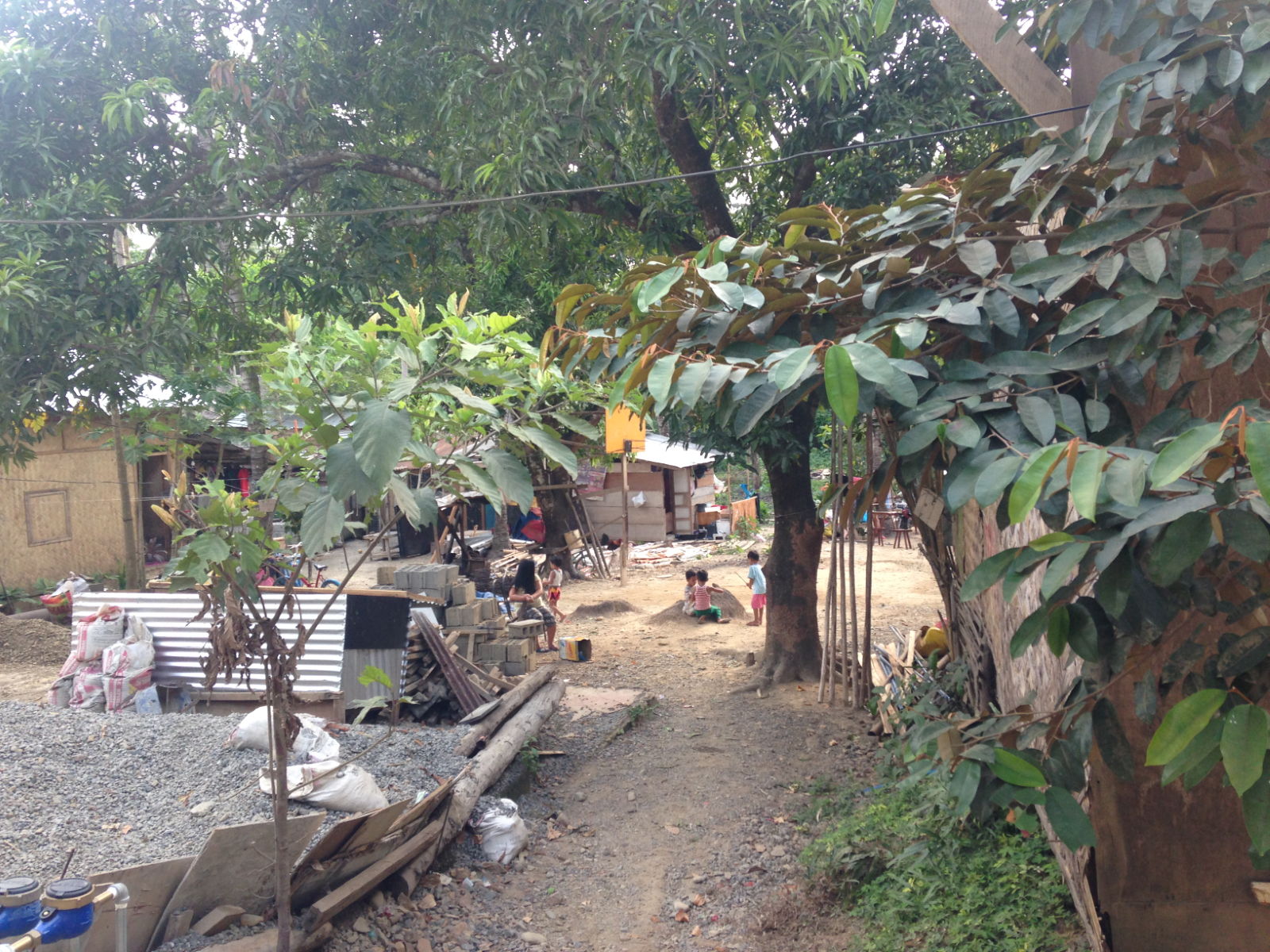
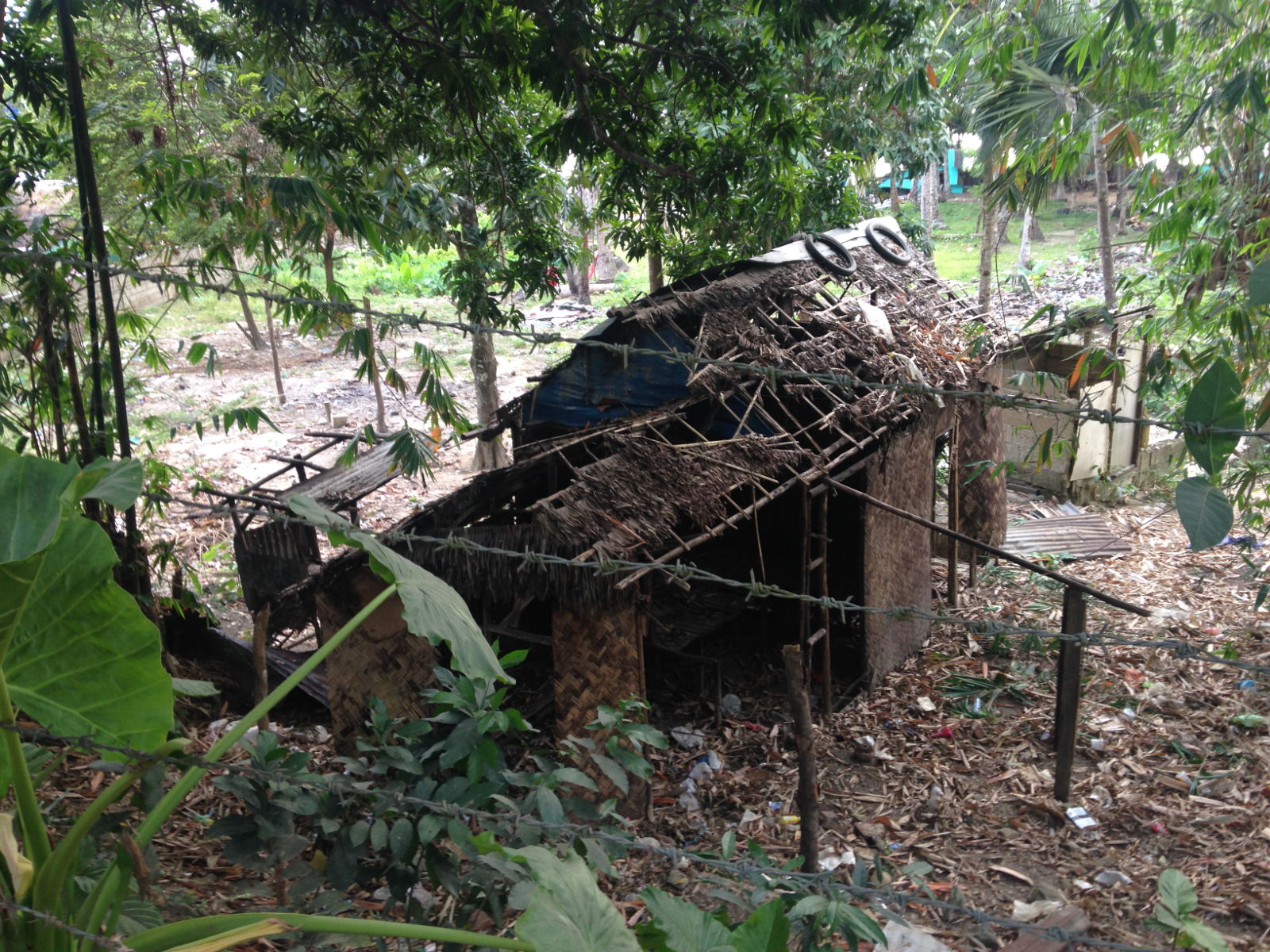



The ‘back yards’ of both homes and businesses inclined steeply down towards the beach and had been used variously for growing crops, animal pasture and pens, storage sheds, or levelled for construction to expand existing premises. The area is popular with backpackers. We passed several westerners and noticed signs advertising burgers, pizza and beer, which can be enjoyed while watching live sporting events in some of the bars.
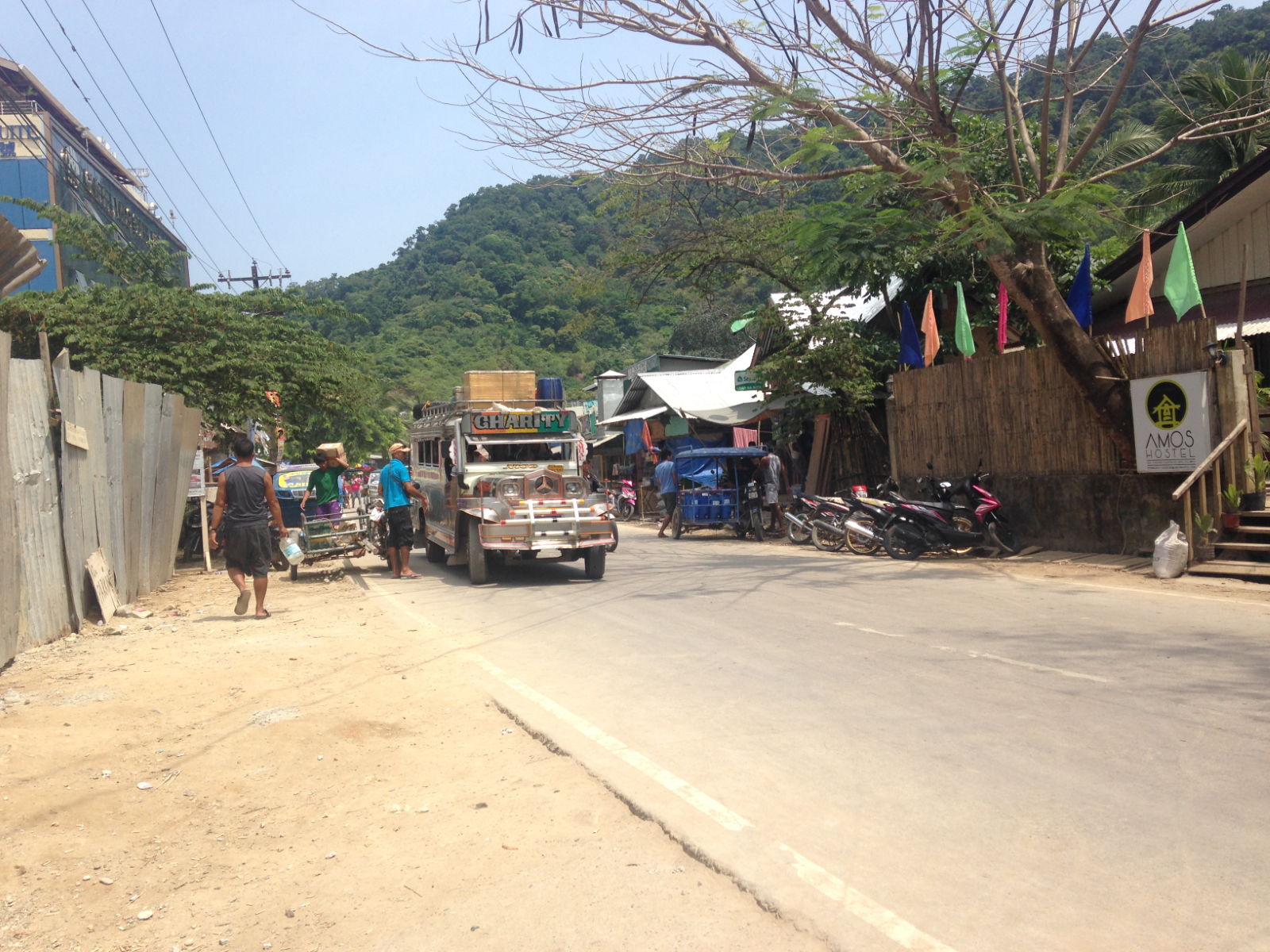
The first place we headed for on reaching El Nido was a beach café for a much needed drink and sit down. After that, we had a short amble around to find a bakery and an ATM before hailing a trike to take us back to the village. Interestingly, the trike drivers, when asked how much the journey will cost, always ask you how much you think you should pay. Paul made a ‘no idea’ gesture the first time this happened and the driver shrugged in return, until Paul made an offer, the driver upped it a bit and we got the hang of the system. Some pics taken at El Nido below
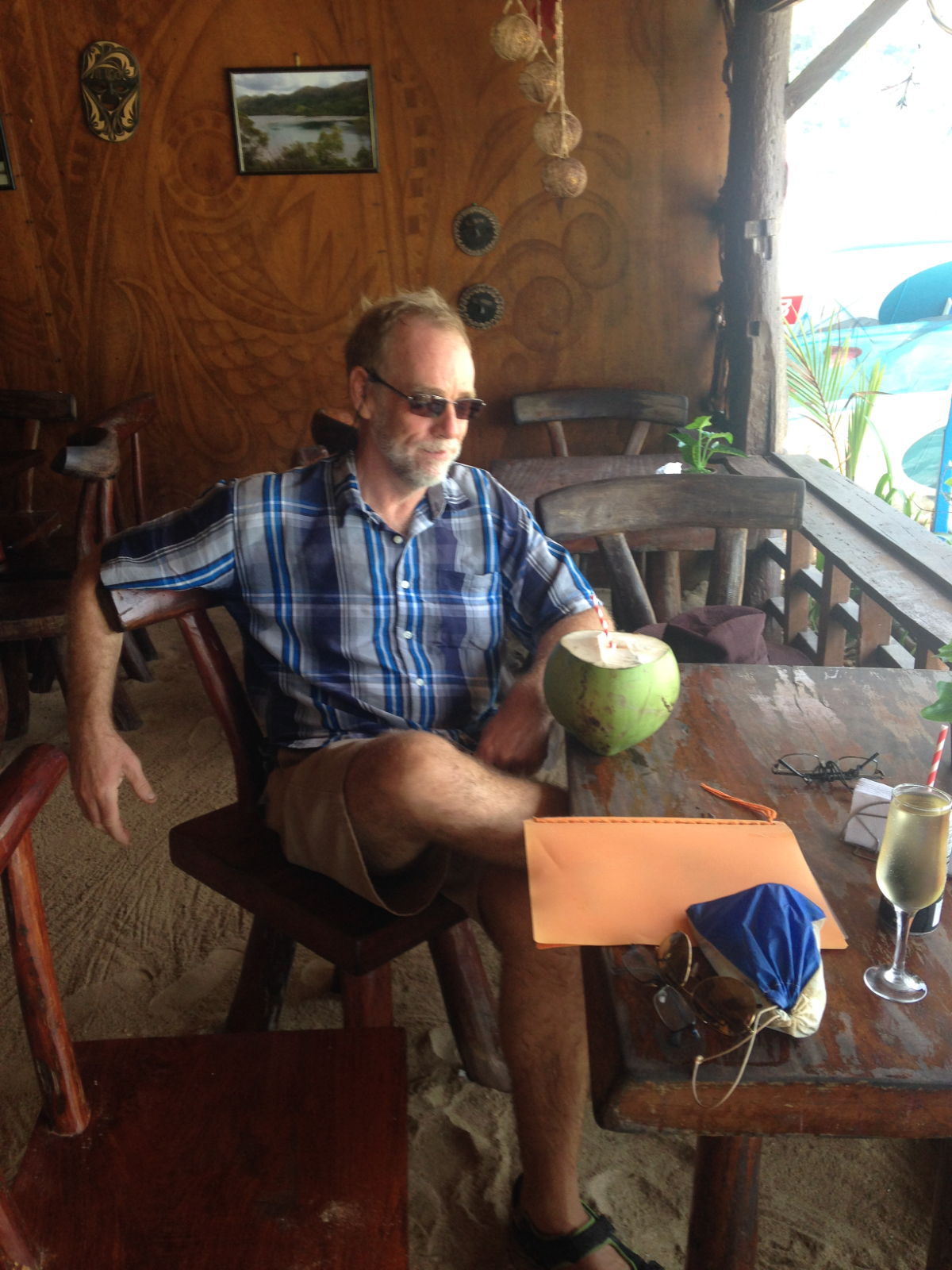
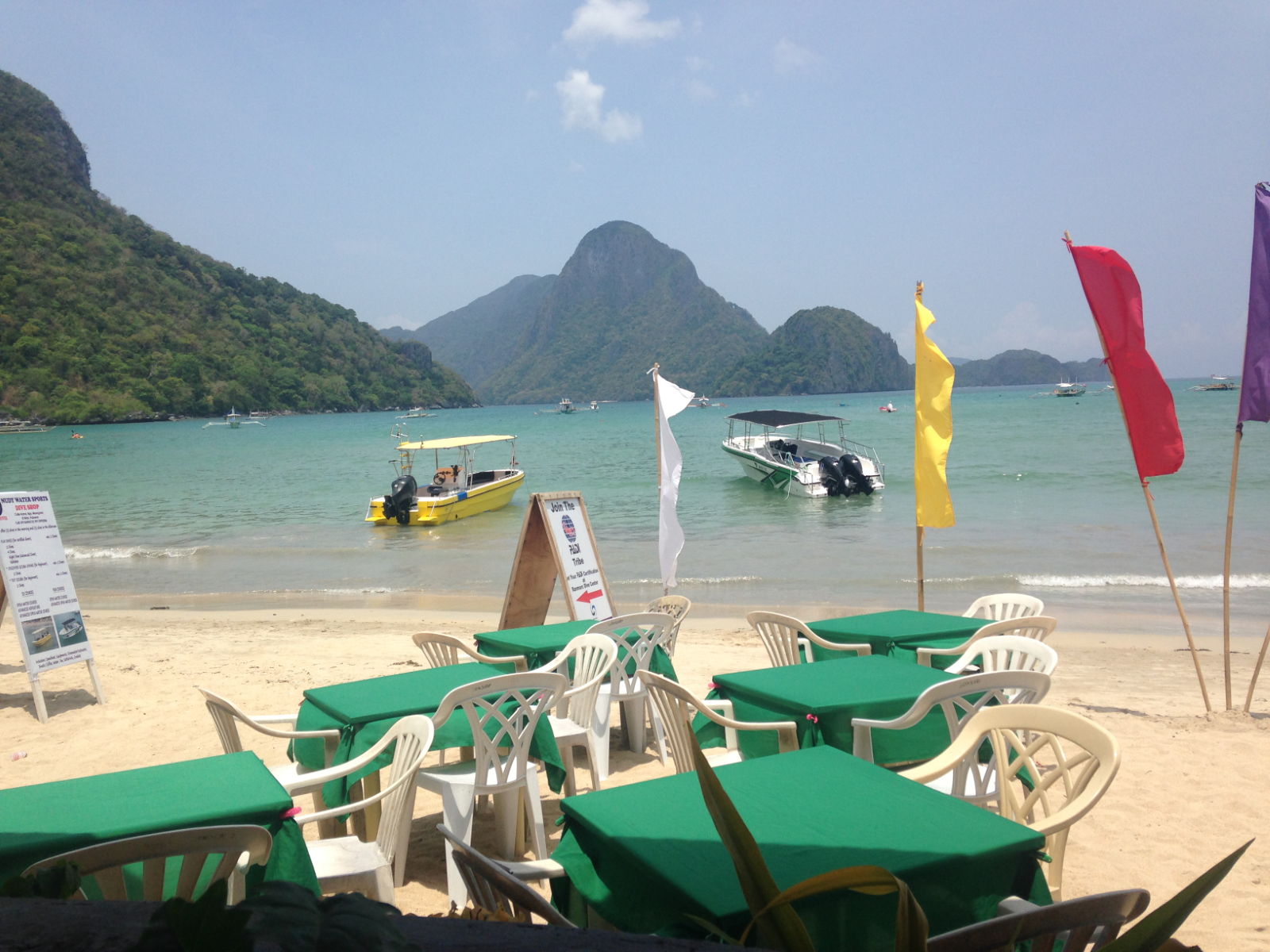
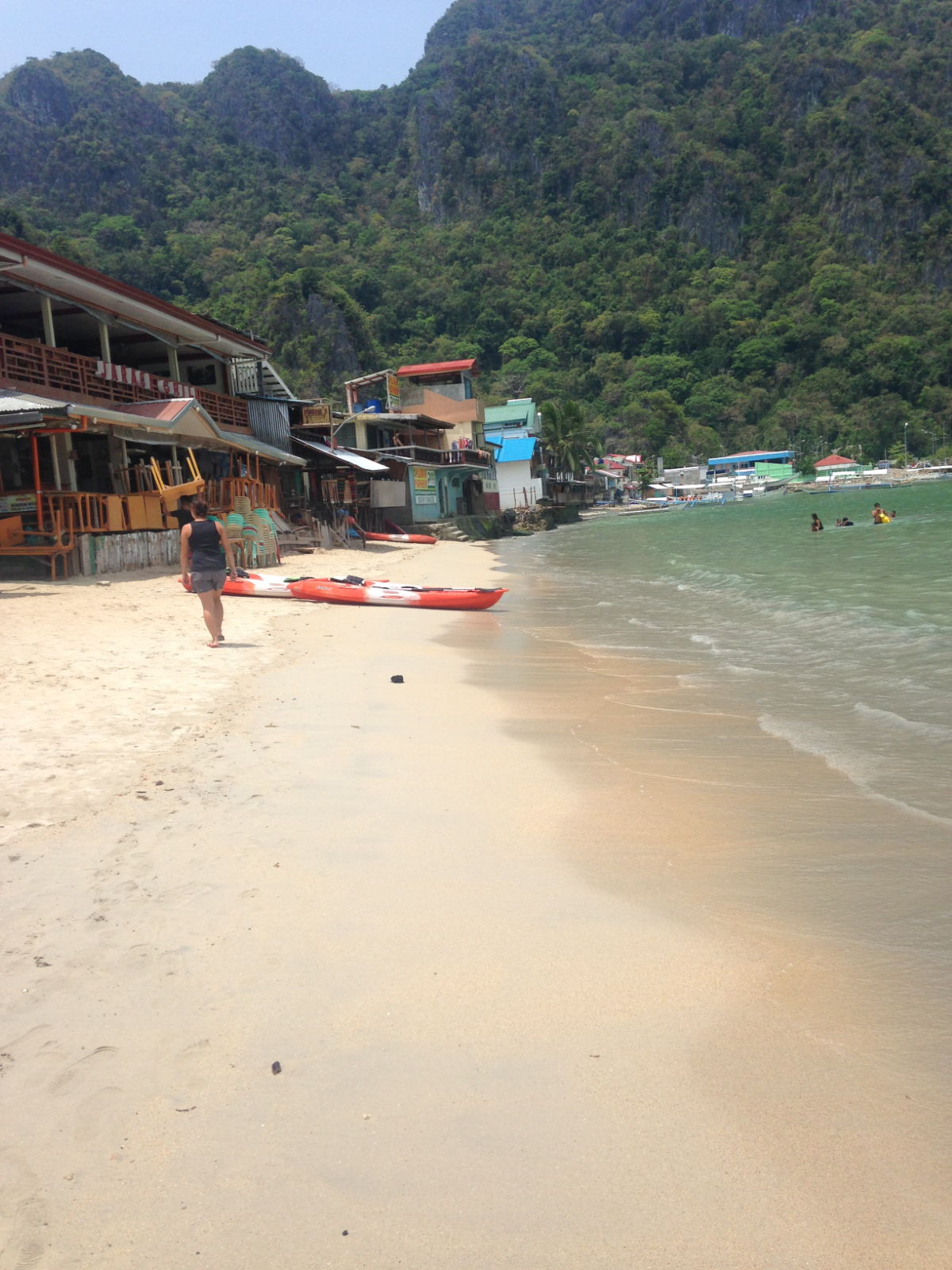
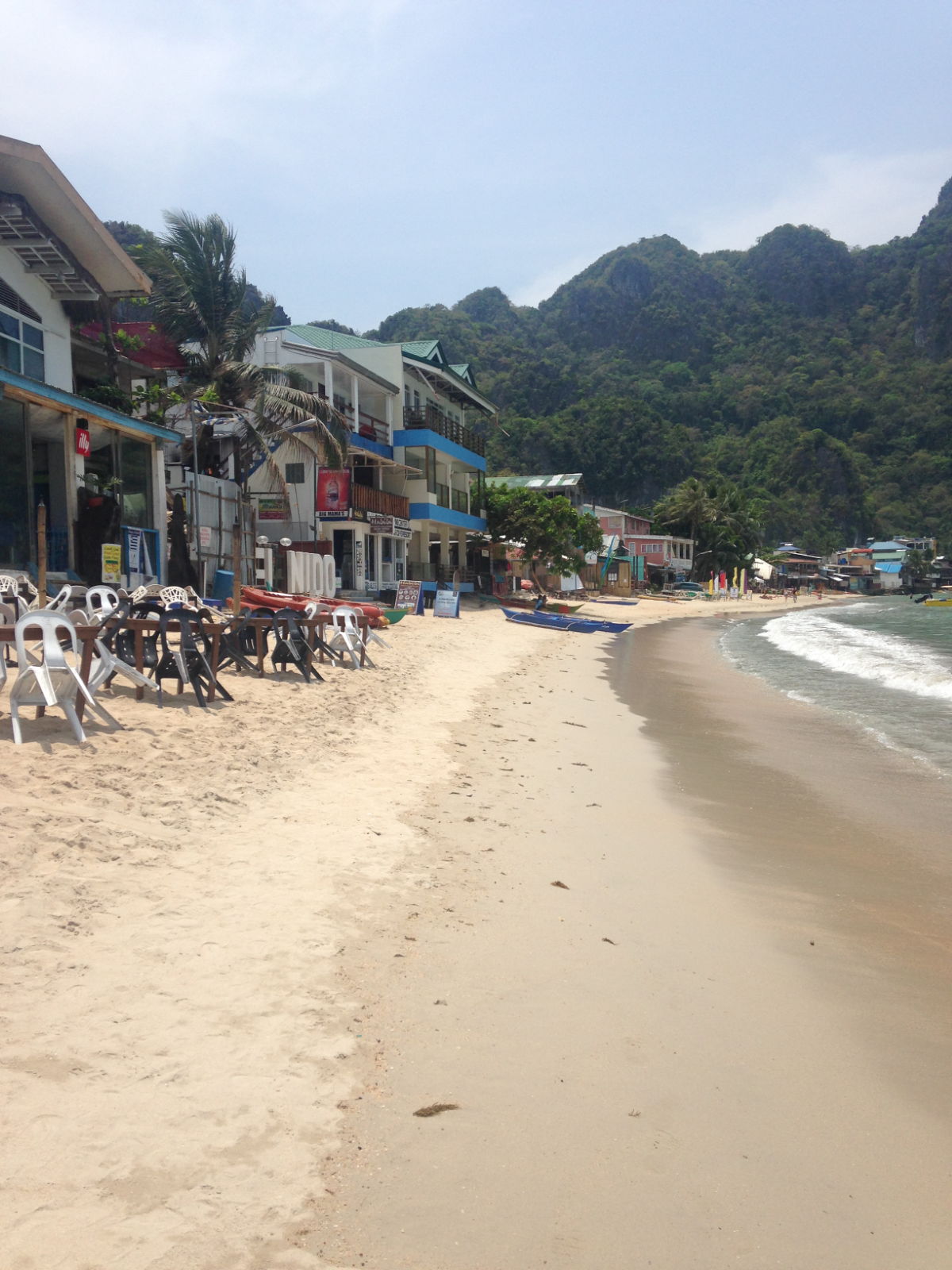


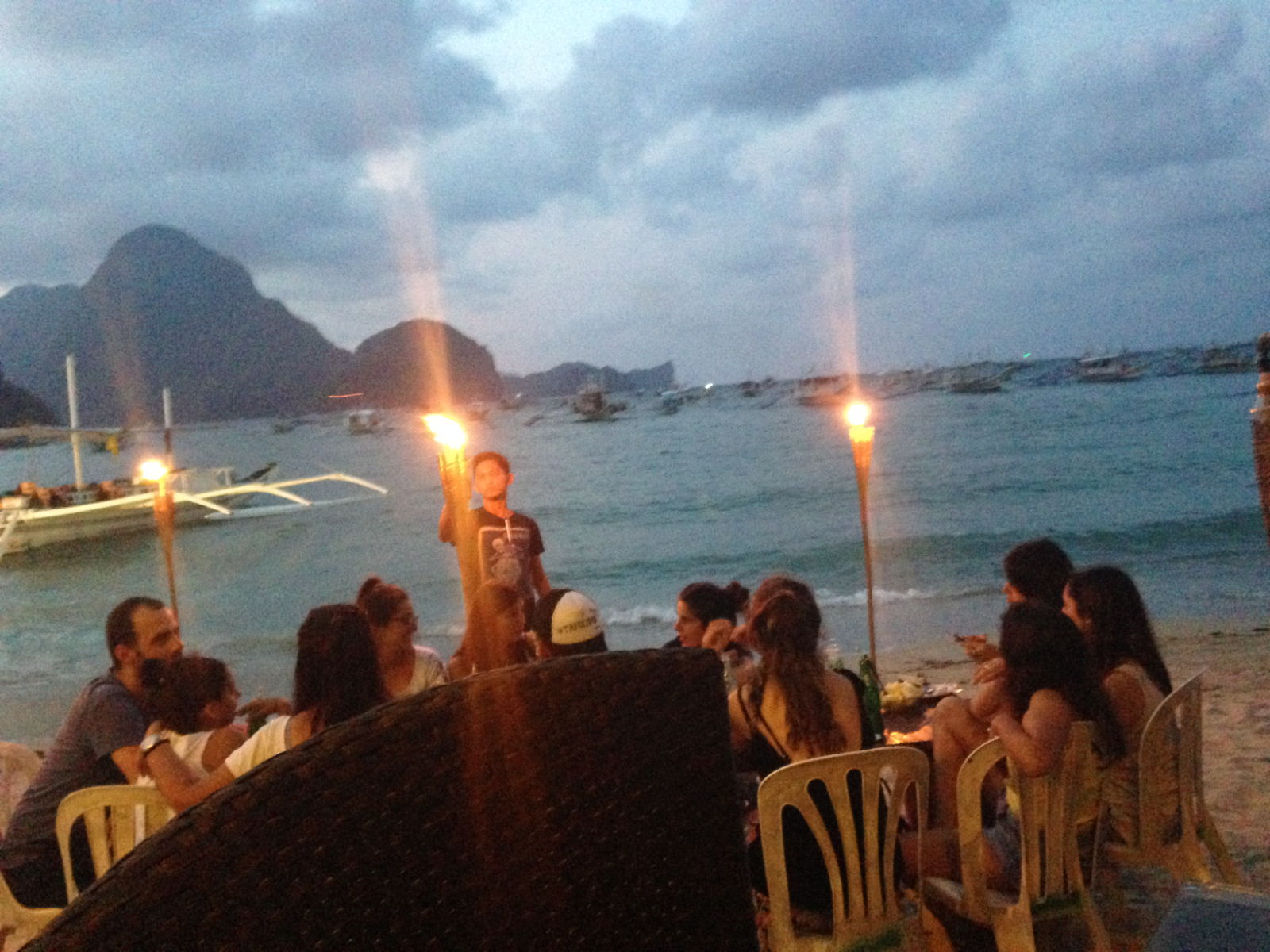
The next day (Thursday March 29th) was a bit of a rest day before resuming our journey to Puerto Galera which would be a two or three day passage. Paul went for a snorkel to look at the underwater life near a little beach opposite our anchorage and late in the afternoon we went out to find Corong Corong’s public market. It was a typical outdoor Asian one with buckets of dried fish, and a separate wet area for the pungent fresh fish and meat (and associated flies). The fruit and veg stalls dominated, however, and were as attractive and colourful as ever. We bought potatoes, pineapple, tomatoes, onions, cucumber, peppers and apples, all from different stalls because the sellers are great to interact with and it would be a shame to limit yourself to just one. At other stalls we bought some ‘genuine’ Rayban reading glasses and some organic insect repellent. With everything so cheap, it would have been easy to give in to a spending spree judging by all the designer bags and perfumes on display 😉 Anyway, the insect repellent would be of much more value to us if it prevented any more of the itchy bites we’d been suffering from.
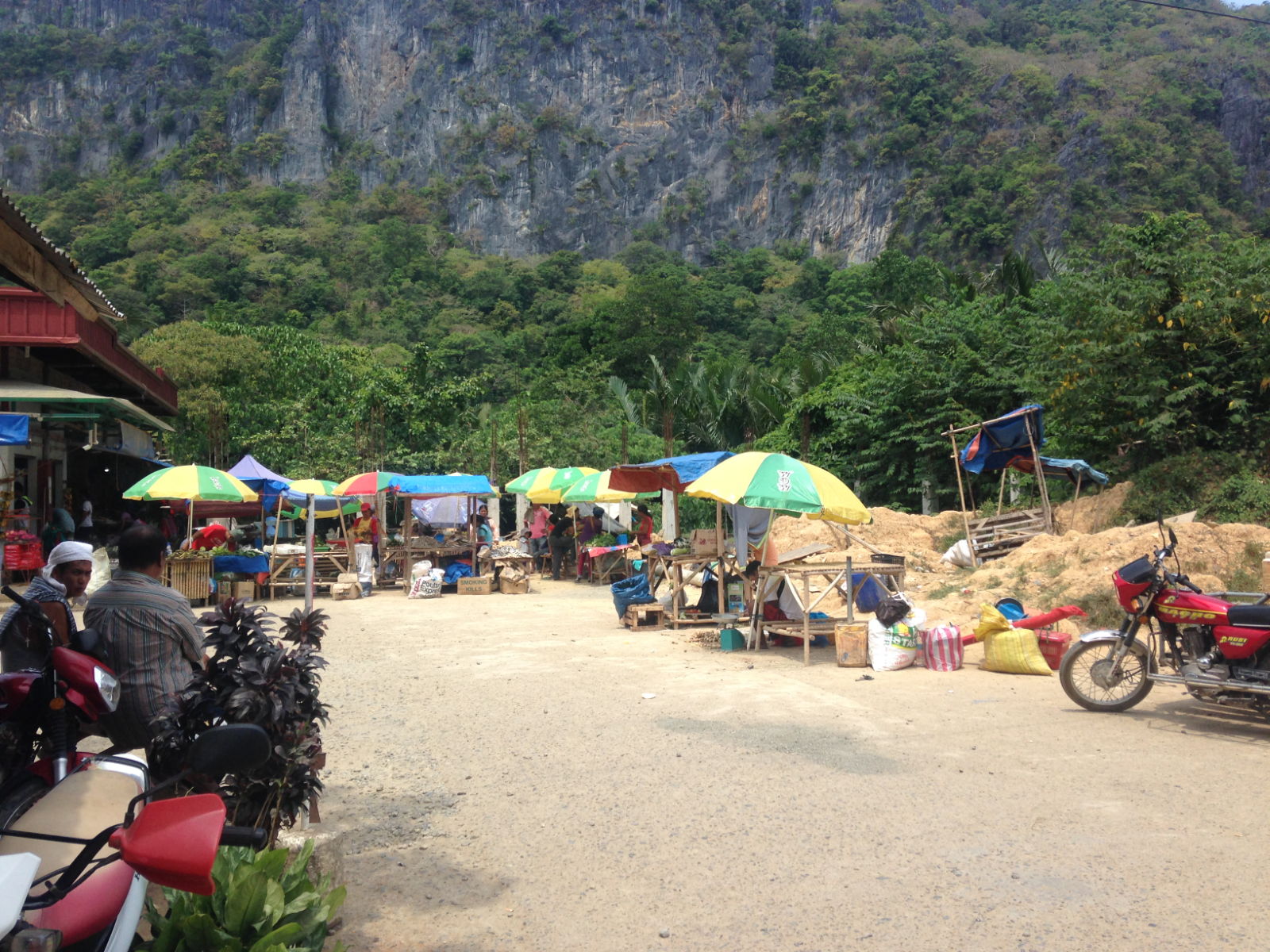
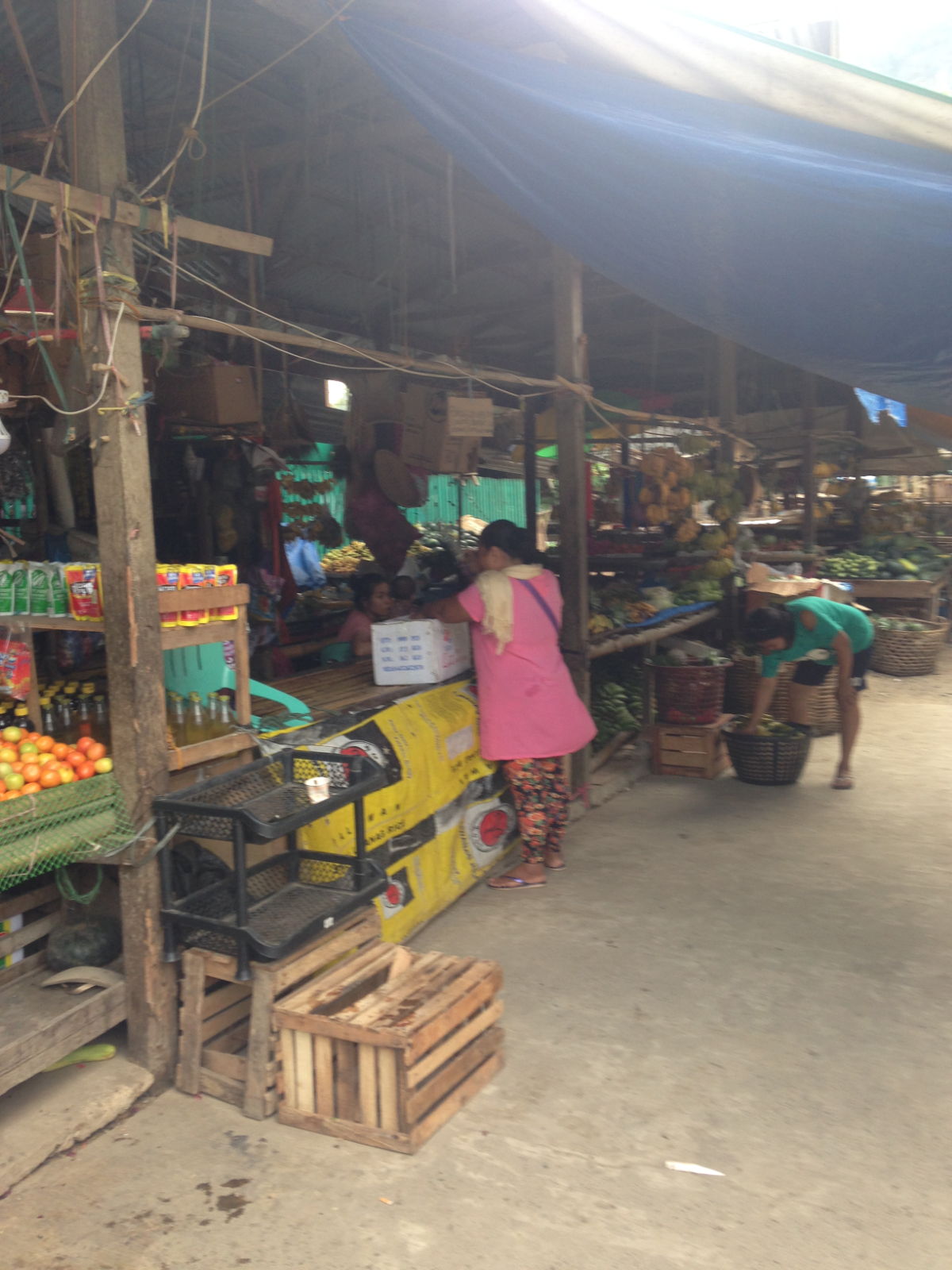
We had dinner in a restaurant close to the beach. It looked as if it might be expensive because it is part of a leisure resort and appeared plush. However, there was a reggae band playing, the menu looked good (and wasn’t too pricey after all) so we had good food, drinks and entertainment all for just over a tenner.


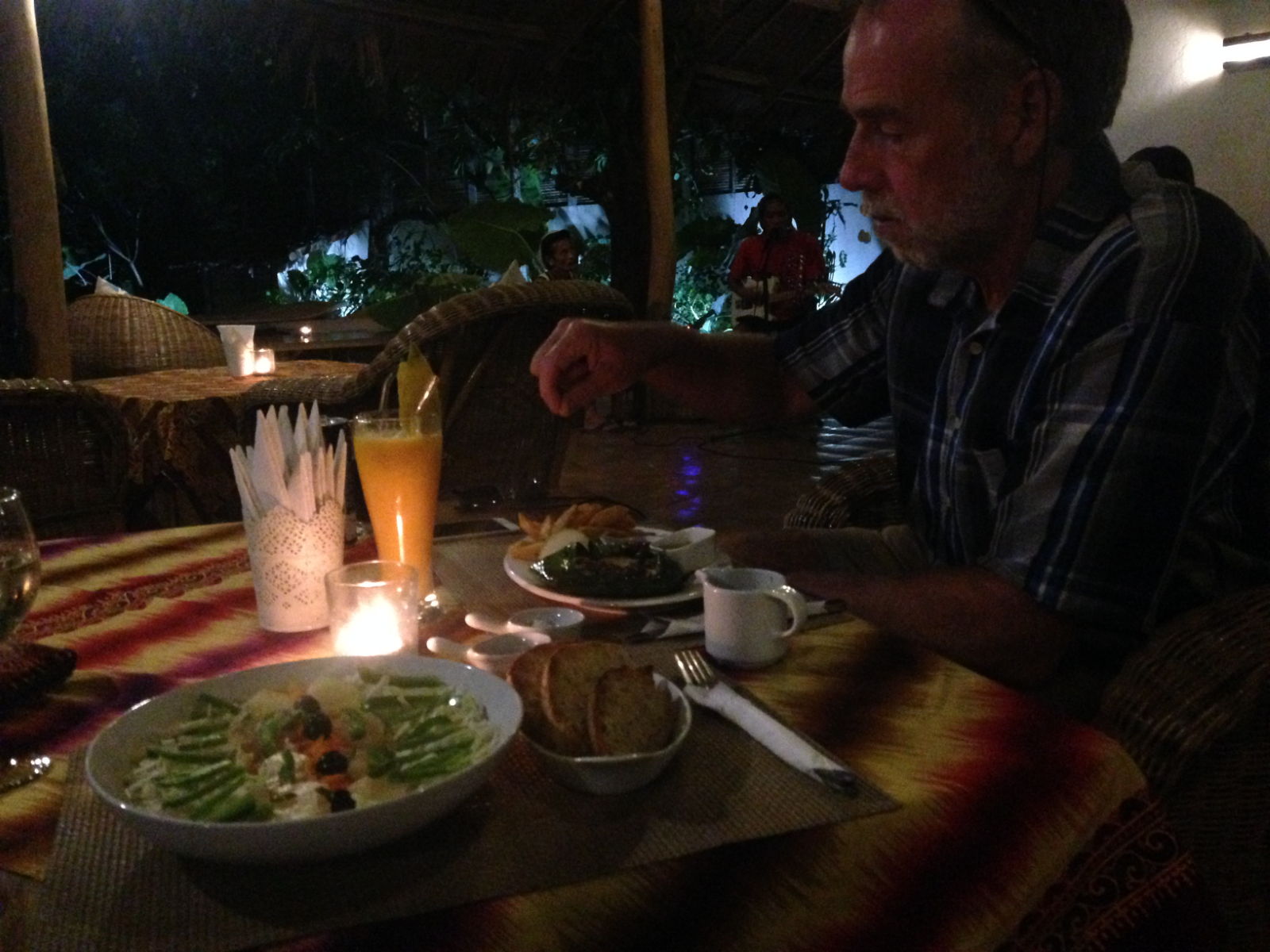
On Good Friday morning, when everyone back home would be tucking into hot cross buns, we weighed anchor and negotiated a tricky gap between two headlands to save going around the whole island. It was bit of an anxious time in case there were shallows and coral but it turned out fine and saved us a bit of time. The Filipino navy called us on VHF just as we had got all the sails out; they just wanted to know our last and next port of call. The sails stayed up all afternoon and we hurtled along at 6-7 knots for most of the day with no engine. After a dinner of pasta and pesto in the cockpit, I took the 8 until midnight watch under the comforting glow of an almost full moon. There was a bit of a tense time when I had to keep my wits about me among a host of fishing vessels. We were surrounded by them and your sense of perspective gets distorted by staring at so many bright and luminous lights. I thought I’d tweaked the course sufficiently but grew so alarmed by the proximity of two very brightly lit squid boats that I called for Paul to come up. I was worried about nets getting caught in the propeller, not to mention incurring the wrath of the fishermen – although it would have been too late by then anyway. Paul tactfully said he wouldn’t have got quite as close as that (I think he said we could have shaken the Captain’s hand across the decks) but thankfully all was fine.

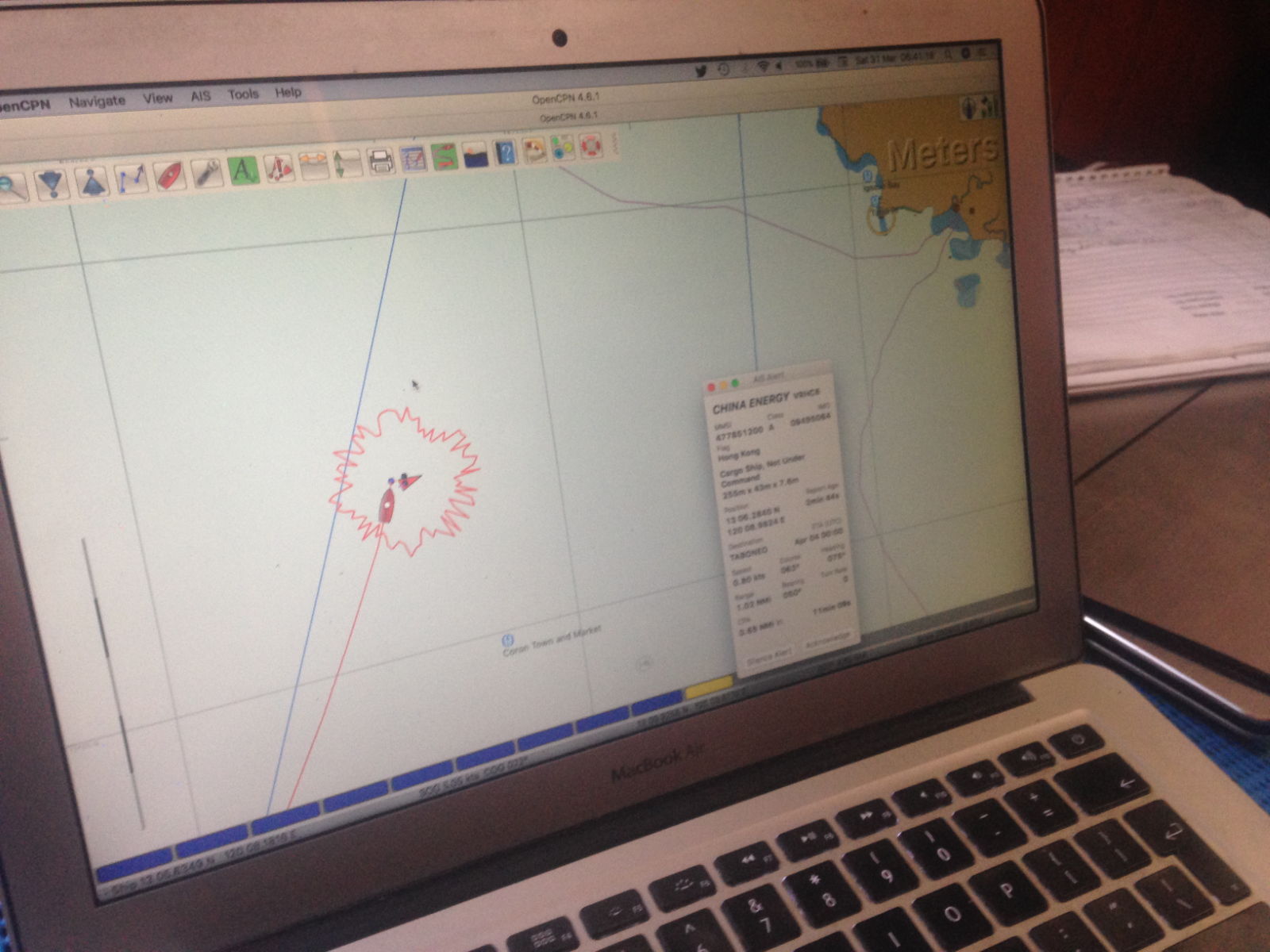
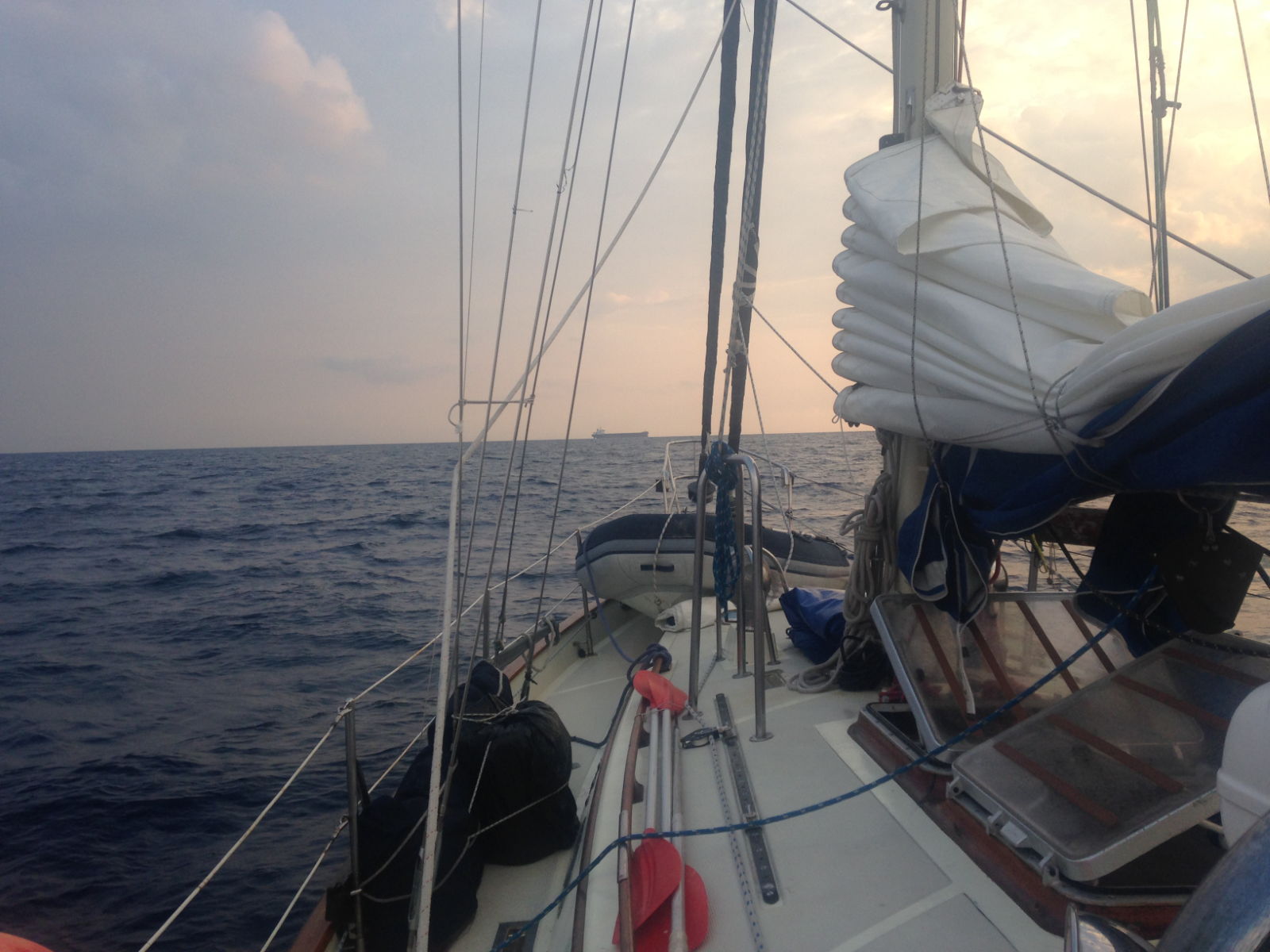
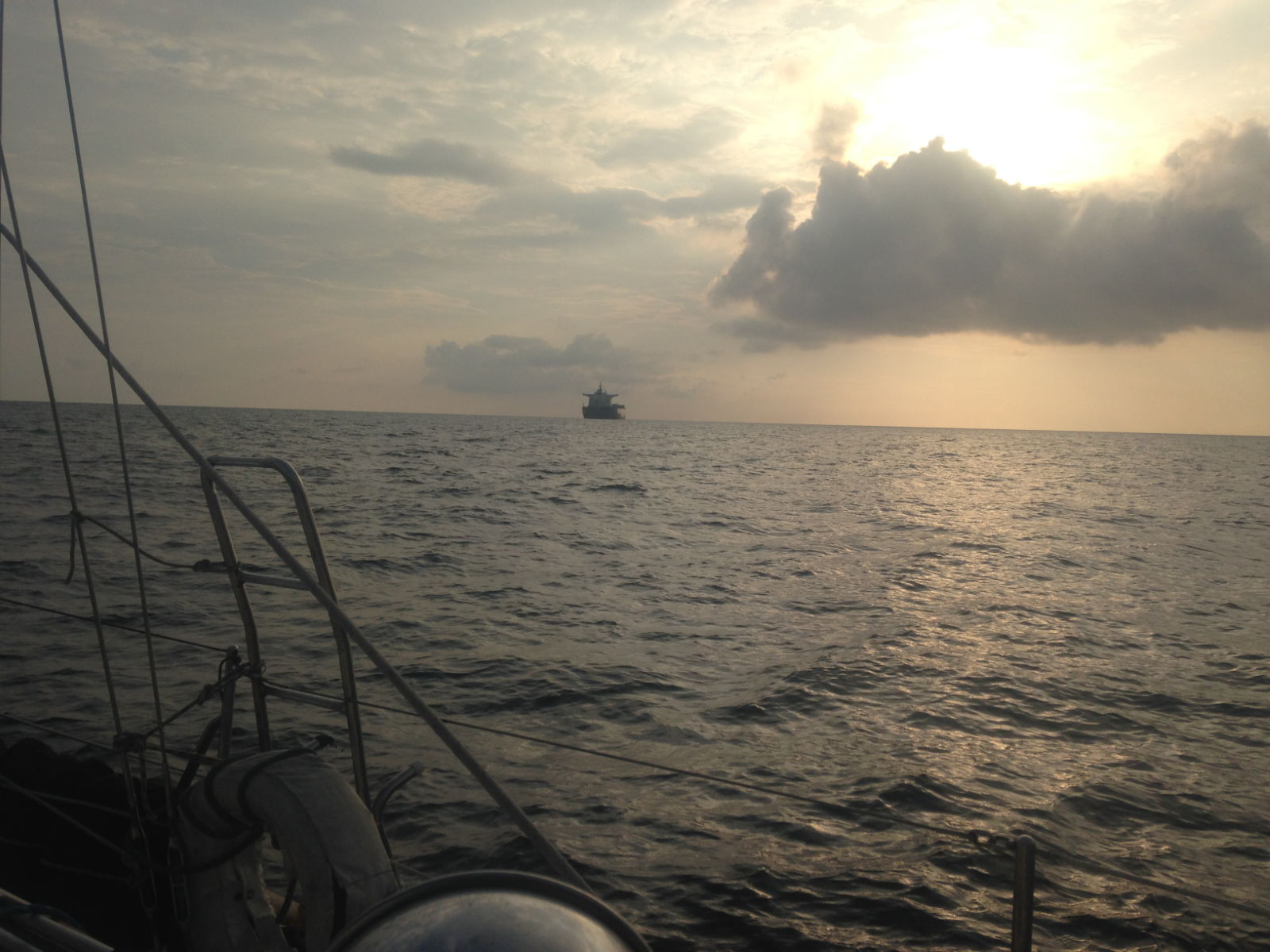
We spent the last day of March at sea. For a while I actually believed we were heading for a place called ‘Dead Man’s Bay’. It wasn’t until Paul later referred to it as ‘Decapitation Bay’ that I realised he was jesting! A new course had been set so that we could have a night at anchor and Paul told me that there had been pirate incidents in the vicinity, but they happened such a long time ago there was nothing to worry about (!). By late morning we were tacking to reach the anchorage on a sea heavy with a swell that rocked us gently from side to side. This motion is easier to move around in than bucking up and down and is less likely to cause sea-sickness (for me anyway). By now, we had advanced north of Palawan, close to the island of Mindoro in the South China Sea. At 1 30 we were in a bay looking for a spot to set the anchor but there was a lot of rock on the sea bed so our first attempt failed. We moved further along and set in 13 metres among several fishing boats. One of them came up to have a look at us and the family on board waved and smiled. Hopefully they are pleased to see yachts visiting the area after pirate activity put many off going near the Philippines.
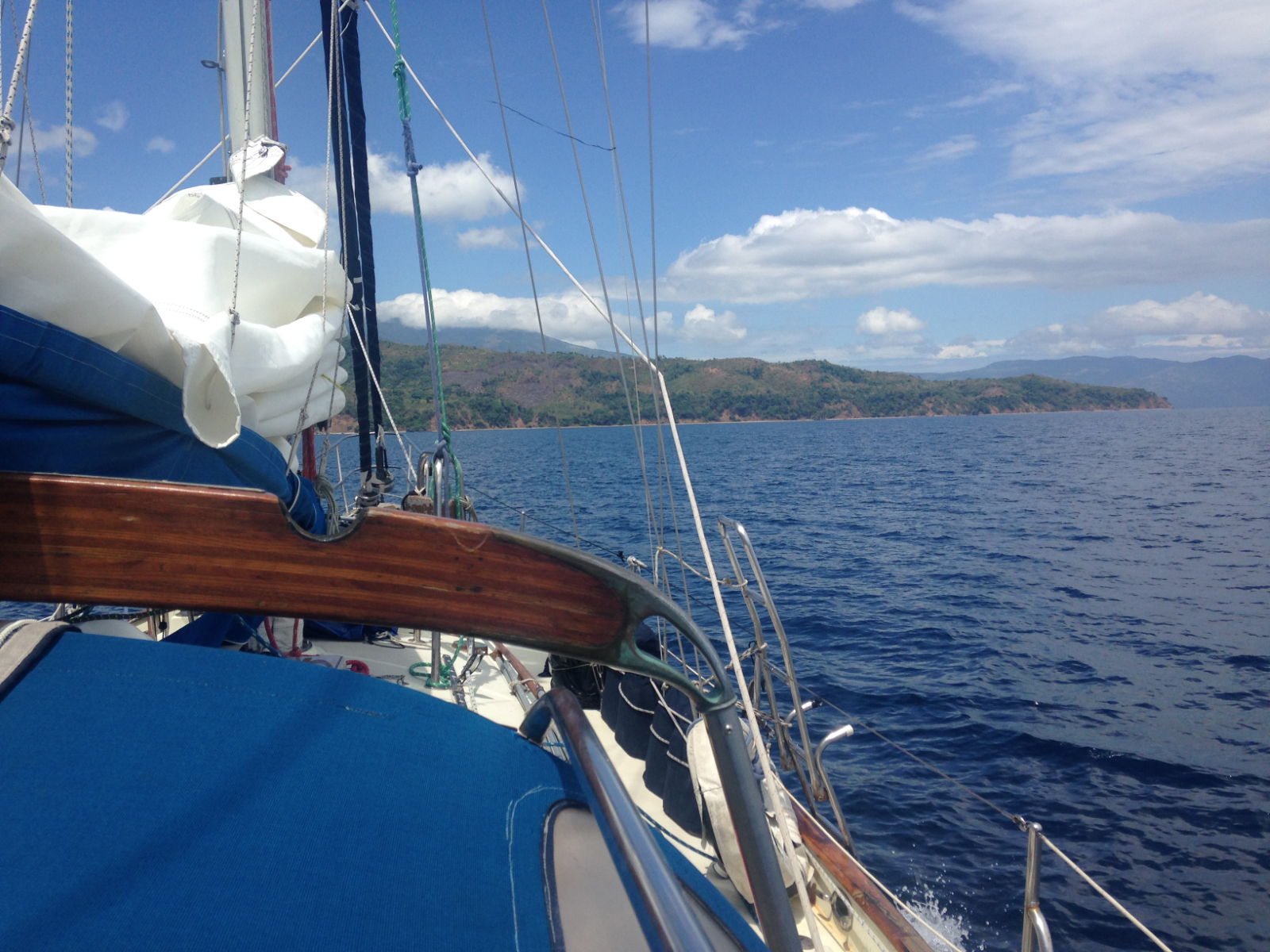
It was nice to have a break from the watches, but the tiredness that builds up from the alternate four hours on four hours off regime soon caught up with us. Both of us crashed out on the cabin bunks and were in a deep sleep by 9 30. The Spanish-sounding name of Puerto Galera would be our next port of call as the race to get to Japan in time for the Setouchi Rally begins in earnest.
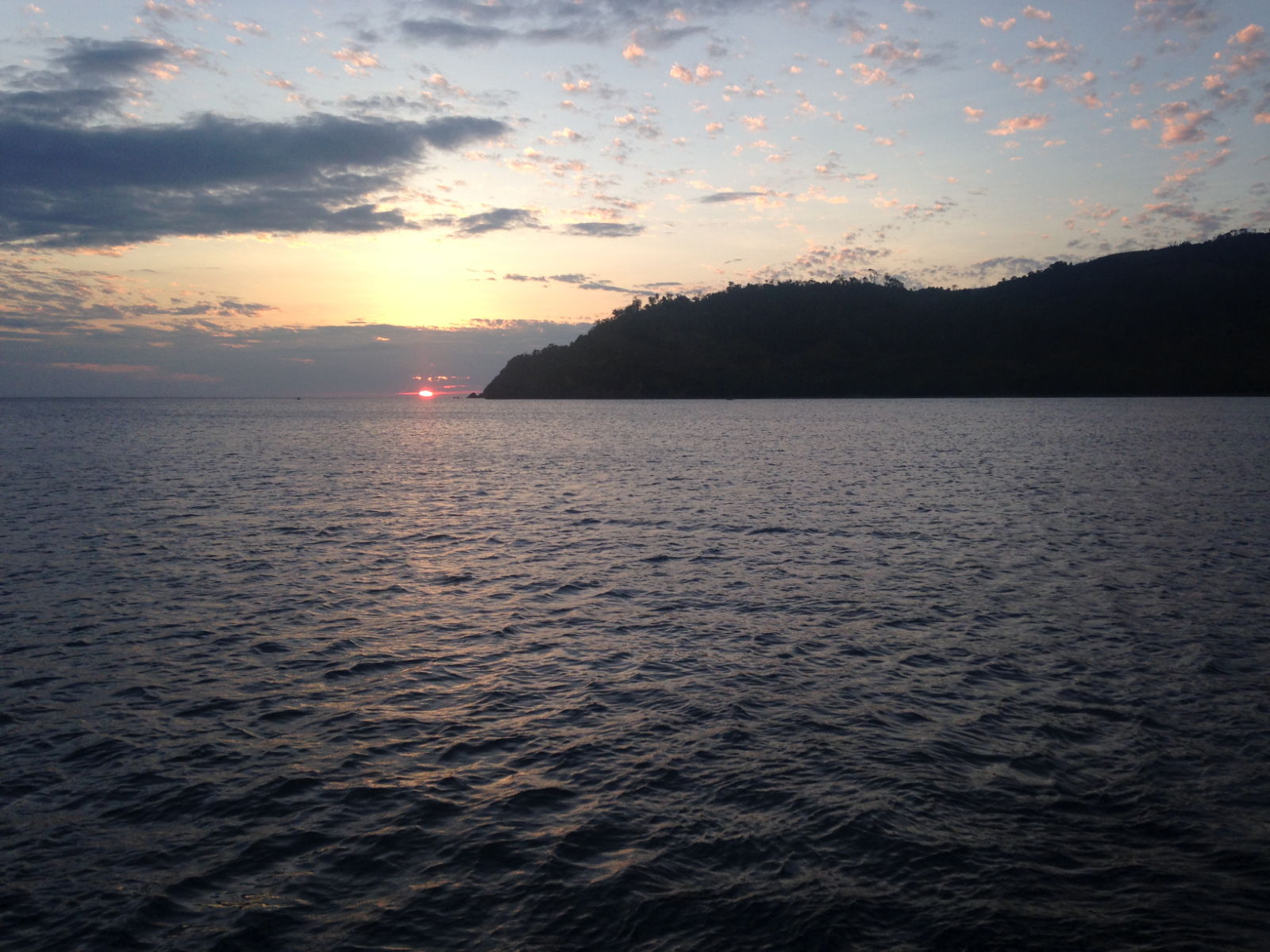

Stunning photos Kathy and such an interesting read. Loved umbrella pic. xx